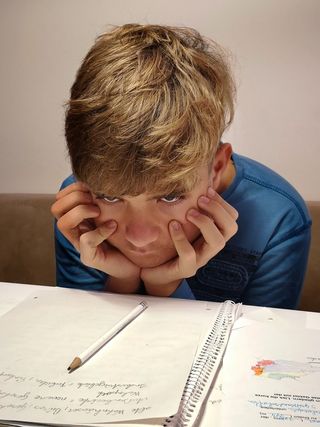Anxiety
4 Sources of Emotional Illness
Successfully treating emotional anguish means discovering its hidden origin.
Posted March 24, 2020 Reviewed by Ekua Hagan
What Is Emotional Illness?
In Living on Automatic, Homer B. Martin, MD, and I include anxiety and depression as the common forms of emotional illness. Many people believe such illnesses come from tangible life problems and ordinary pressures of life. But we discovered emotional illnesses are generated by relationship difficulties and conflicts. In turn, these conflicts emerge from how people are emotionally shaped or conditioned as children.
We are accustomed to behaving with others in ways that give predictable responses to and for us. When this fails to work, we experience emotional upset—anxiety, anger, or frustration. If the problem goes on longer, we have emotional dysfunctions—sadness, crying, angry blowups, not eating or overeating, and even more frustration and anxiety. When the hoped-for response we desire is not forthcoming in our relationship for an extended time period, we develop emotional illnesses with clinically diagnosable anxieties and depressions.
What Do Emotional Dysfunctions and Illnesses Look Like?

Among children, we observe those who cannot adjust to school or develop friendships. We see teenagers who act up or who nerdishly overachieve and have either few or turbulent friendships. Middle-aged people may face divorce and be depressed and/or resort to substance abuse. In old age when people have infirmities, they may contemplate suicide.
No matter who in a family has an emotional illness, the illness impacts other family members as well as people close to the ill person, such as friends and co-workers.
Four Sources of Emotional Illness
Support Imbalances
Our support system can become stuck like a seesaw, with one end too high and the other too low. To be emotionally healthy we all need to maintain balance in our emotional support systems—what we give to others and what we receive from others. The joy of life is having the seesaw of support go up and down. Sometimes we give support and sometimes we receive it.

Emotional symptoms arise when stress from relationship conflict exceeds our ability to manage. Our anxiety goes sky high and out of our control. Our relationship support seesaw tilts too far up or down as our emotional support becomes unbalanced and stuck in a lopsided position.
Overwhelmed Coping
When we remain unable to balance our relationships or manage emotionally for a long time, anxiety worsens. We develop symptoms, frequently physical ones. These can be stomachaches, headaches, insomnia, oversleeping, weight gain or loss, acid reflux, alcohol or drug use, and many others.
Unawareness of Where the Real Problem Lies
We are accustomed to living in a role throughout our life. This is due to our emotional conditioning. We interact with people in the same ways we always have. This confuses us because we have no insight into where our problem lies. We see no reason our usual coping should fail us and create problems now when it didn’t before. Also, often we cannot tell which relationships are the ones giving us problems.

Programmed Minds
We are not aware of other ways of conducting relationships than what we are used to and practiced at. So we don’t know how to correct our problems. This poor insight is due to our relationship roles that produce automatic living. These roles are programmed in us at young ages and come from our emotional conditioning early in life.
We don’t understand how we participate in our closest relationships. We don’t grasp how we try to deal with our problems. And, we don’t understand how our problems exceed our coping abilities.
Healing Emotional Illness Through Deconditioning Psychotherapy
The good news is emotional illnesses can be treated successfully. For 80 years, Dr. Martin and I have used a form of therapy we call “Deconditioning Psychotherapy.” We help people observe their minds and ways they unconsciously think and see both themselves and others. We help our patients discover themselves from a different perspective, one they never knew existed.

We help them gain self-understanding by focusing on how they were emotionally conditioned as children. As therapists, we concentrate on the hidden aspects governing the ways they think, behave, and elaborate emotions. With deconditioning psychotherapy, we do not use medications, brief therapies, or homework assignments. We talk with people over a lengthy time. With each patient, we arrive together at an awareness of the key problems. We then aid each patient in making the corrections he or she wants.
Deconditioning psychotherapy helps patients make changes in their basic personalities and lessens the childhood roles they learned unconsciously and through emotional conditioning. With deconditioning psychotherapy people’s relationship problems rarely recur.
Such therapy inoculates people against future emotional illnesses. Deconditioning psychotherapy treatment aids people so they can avoid repeating unhealthy relationship patterns, now and down the road.




